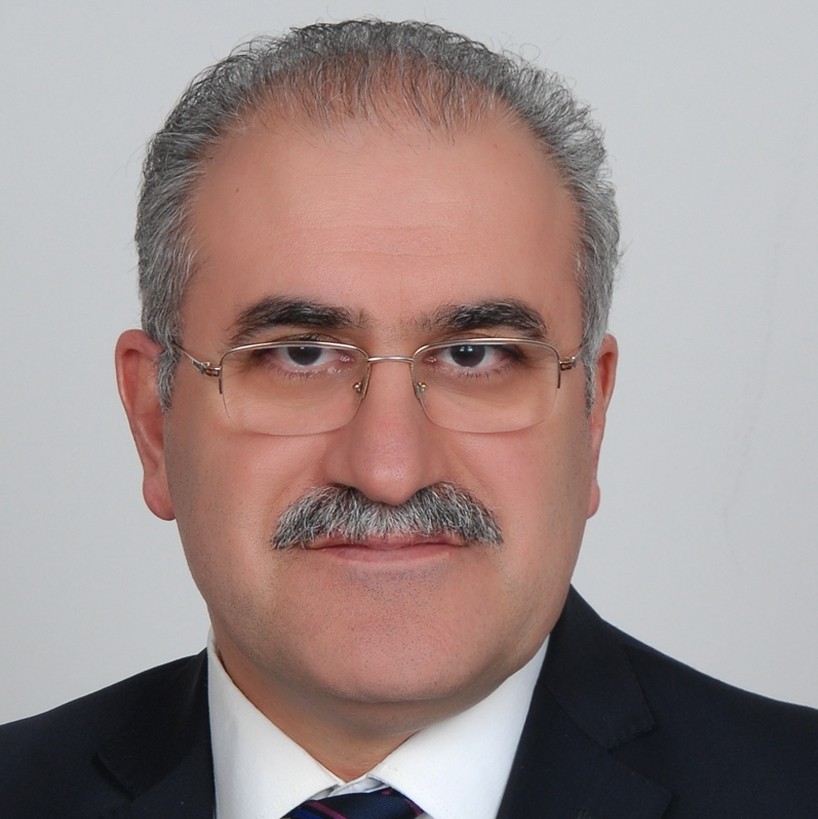Research Article
Review
Aim & Scope
The main purpose of the "Medical Research Reports" journal is to publish scientifically qualified clinical research, experimental research and theoretical framework for articles in the fields of medicine and dentistry, which will have a significant contribution to the academic literature.
Also, we aim to ensure the continuity of education and research, contribute to sharing the knowledge, and to develop the application. The target audience of the journal is researchers working in or interested in medicine and dentistry. "Medical Research Reports" is a medical journal based on the principles of independent, unbiased, double-blind review.
"Medical Research Reports" are published every four (4) months, three (3) times a year. In necessary cases, special or additional issues can also be published.
Published papers in this journal will be in English and Turkish. Within the framework for research ethics, double-blind peer review acts with the principle of ensuring publication time and a rapid review.
The journal is an open access periodical that publishes with the principles of independent, unbiased and double-blind refereeing principles.
The journal accepts many types of paper. Apart from the original articles, it also publishes short reports, reviews, case reports, letters to the editor, academic articles, literature summaries and congress/meeting records.
The papers published in this journal are in Turkish and English.
"Medical Research Reports" is an open-access journal and the registration, submit and publication of the the article is free.
Articles submitted for publication should not have been published in another journal before. The content of the paper is available on the journal's website free of charge.
Author Guidelines
PREPARING THE ARTICLE
Instructions for authors
Articles should be prepared according to ICMJE (Recommendations for the Conduct, Reporting, Editing ve Publication of Scholarly Work in Medical Journals) standards. (updatted on December 2015 - http://www.icmje.org/icmje-recommendations.pdf). Authors should prepare the articles on the basis of relevant guidelines given according to the type of the study.
CONSORT (Consolidated Standards of Reporting Trials) guidelines should be used for randomised control trials, STROBE (Strengthening the Reporting of Observational Studies in Epidemiology) for observational studies, PRISMA (Preferred Reporting Items for Systematic Reviews and Meta-Analyses) for meta-analysis studies and TREND (Transparent Reporting of Evaluations with Non-randomised Designs) guidelines for non-randomised behavioral and public health evaluations.
Articles should only be submitted via https://dergipark.org.tr/tr/pub/mrr, the journal's official online article submission and evaluation system.
Articles sent from any other medium will not be considered.
First, The editorial Advisory Board will assess the technical language and comprehensibility of the articles. Articles that are considered unappropriate to be published in “Medical Research Reports, the ones not following the typing instructions or whose content is inadequate will be resent to the authors or rejected.
The main text can be written in Turkish or English. Authors are required to use the USA English. Turkish and English Abstract should not exceed 400 words. Also the full text should be saved in two separate files; the one where the authors’ names are written and the other where the names aren’t included. Cover page should also be filled. At least 6 files should be uploaded in the system for an article, which are;
1) Application letter (Cover letter)
2) Cover page
3) The full text including the authors’ names (with the Abstract, Full Text, References, Tables, Pictures or Figures)
4) The full text excluding the authors’ names (with the Abstract, Full Text, References, Tables, Pictures or Figures)
5) Filled and signed copyright form
6) Plagiarism report
7) Ethics committee approval form (if necessary)
Apart from these 7 files, if additional material, pictures or graphics are added they should be uploaded separately to the system. Authors can send their questions and requests about their article submission and evaluation process to medicalresearchreports@gmail.com .
For authors who do not/cannot benefit from these templates, the JOURNAL WRITTING RULES are described in detail below.
TYPES OF ARTICLES
“Medical Research Reports” accepts many types of articles, including original articles, short reports, review articles, case reports, letters to the editor, academic articles, abstracts, and congress/meeting reports.
•Research papers: ”Medical Research Reports” accepts original clinical (with healthy individuals or patients) or experimental (human, animal or in-vitro) research articles for all fields.
These articles may include randomized controlled trials, observational studies (cohort, case-control, or cross-sectional), diagnostic test accuracy study, systematic reviews and meta-analysis, nonrandomized behavioral and public health studies, experimental animal studies, or other clinical and experimental studies.
•Case reports: ”Medical Research Reports” publishes interesting, educational or rare case-reports.
•Reviews: "Medical Research Reports" publishes clinical review articles about the natural history of the disease, current diagnosis and treatment approaches; scientific reviews on the basis of the mechanism and treatment of diseases, and current reviews written for the new drugs and medical devices.
•Short reports; It should contain research data contributing to the relevant field in a concise way. Short reports should include a Turkish and English title, a single paragraph abstract in Turkish and English, and keywords in Turkish and English.
Short reports should include at most two tables and one figure/graphic/picture. There is no need to divide the abstract into sections.
WRITING RULES
• The article should accommodate less than 5000 words (without the abstract/ table/ figure/ references).
. Except for the first page, all articles should have page numbers in the upper right corner.
The article should include texts to explain the tables and figures. The paper should include five tables at most.
• General Format: The page size should be A4, gaps from sides, up and bottom should be 2.5 cm. The references should be ordered as cited in the article. Our journal also suggests that the published Turkish articles should be cited as references as well. The line space of the text, including references, tables and figure legends, should be 1.5 and the font 10.
If possible the text, symbols and other characters should be written in Times New Roman font 11. Explanations for abbreviations should be given where they are first used, followed by the abbreviation in parentheses.
• The abbreviations used in the article should be in the internationally accepted form, expending where they are first used, and the abbreviated form should be shown in parentheses.
Afterwords, it should be used in the abbreviated form.
• Starting from the title page, all pages should be numbered (1st page as title page, 2nd page abstract in Turkish, 3rd page abstract in English).
The page number should be put in the upper right corner of each page.
You should carefully check the final verison for the spelling and grammar errors.
•Case reports should encompass the following five sections: an introduction with a literature review, a description of the case report, a discussion that includes a detailed explanation of the literature review.
Titles in the review articles should suit the content of the text.
• Sections of the article: All research articles should be written in accordance with the following headings:
• Application letter: Authors should indicate the title and the type of article, and whether the submitted work has been sent somewhere else before.
The application letter should contain a statement that while the article is under review by "Medical Research Reports", it will not be published elsewhere or considered for publication.
In addition, the full name, address, telephone number and e-mail address of the author should be written at the bottom of the application letter.
The author should also write the names of two referees, that don’t work at the same institution or are not one of the writters of the paper. The application letter should be signed by the author, scanned, and presented in jpg. or pdf. attached to the other files of the article.
• Cover page: Prepare your page as a separate electronic file including the following:
-Article Title (in Turkish and English, without any abbreviations).
The title of the article should be as short and descriptive as possible, all words in the title should begin with a capital letter (except for conjunctions), written in bold and placed in the middle of the page.
-In Turkish articles, the title should be written in both Turkish and English. Abbreviations should not be used in the title of the article.
• You should write the full name/s of all author/s and their working institutions and no academic titles should be included.
• The cover page should include the institution information of all authors (name of institution, address, zip code, city and country).
• The authors affiliation adress should be matched to the author’s name, indicated with the number “1”, “2”, “3”.
• In addition, the main author should be indicated in the article with "*", specifying the name, address, e-mail address, telephone and fax numbers.
• ORCID numbers of all authors should be included on this page.
• If available, the place and date of the academy meeting, where the study was presented should be added.
Indicate if any financial support was received for the study.
• Abstract: Abstracts in Turkish and English should be written on separate pages after the title page.
The abstracts in English and Turkish should contain a maximum of 400 words and be arranged according to the following headings: (1) Introduction, (2) Material and Methods, (3) Results, (4) Conclusion. Below the headings write briefly the topic of the article, how the study was conducted, main results and the conclusion taken from these results.
Case reports should not have any subheadings. Abstracts should include as few abbreviations as possible.
There shouldn’t be any references in the abstracts.
• Key words: English key words; There should be a maximum of six according to Medical Subject Headings (MeSH).
Turkish key words; There should be a maximum of six according to Turkish scientific terminology.
• Introduction: The aim of the study should be written briefly with the available data on the subject of the research.
• Material and methods: In this section authors should include information on how the study was conducted, how the participants were selected, and which methods were used.
Source for the known methods should be added.
New or modified methods used should be described in details.
Doses, concentrations, route of administration and duration of drugs and chemical agents should be specified.
Research ethics committee approval (name of the ethics committee, approval date, regulation number) should be written. In addition, the administrative permission from the relevant authorities should also be specified.
• Statistics: In the Material and methods section, all statistical methods used, including summarizing the data, explaining the hypothesis, and the level of statistical difference based on the tests, should be stated clearly.
• Results: Results of the study should be written in a logical order and as detailed as possible in the text, supported by figures and tables; Information given in figures and tables should not be repeated in the text, unless necessary.
• Discussion: The primary and secondary findings of the study should be presented, comparing to the findings in the other scientific literature. You should avoid too much knowledge in this section. Consider only published articles directly related to your results interpretation and include them in the context of the study.
• Conclusion: The results of the study should come to a final and clear conclusion. The potential effects of the study results on current clinical practice should be stated in a single sentence. The implications that do not support the study results should be avoided.
• Conflict of interest: All potential conflicts of interest should be written under this heading. All the connections to pharmaceutical companies, biomedical device manufacturers, or other companies that have services or products related to the subject of the article should be clearly stated.
.If there are no conflict of interest, in this section you should write “no conflict of interest”. Statements regarding conflicts of interest should be written at the end of the page before the references page, just after the acknowledgments.
• Financial support: In this section, the names of any fund or organization that have supported the study, should be written.
• Acknowledgement: The names of individuals who contributed to the study, but did not meet the authorship criteria should be written in this section. Consent of all individuals named must be obtained.
• References: The number of references is maximum 50 for research articles and maximum 10 for case reports.
In short literature reviews and/or Case series (>3 cases) it can be 15, in Reviews it can be up to 80 references.
References should be written in “Vancouver” style according to the order in the article.
Examples of Vancouver citating and referencing style guidelines are available at http://guides.lib.monash.edu/ld.php?content_id=14570618.
• Figures: Figures should be placed as separate pages at the end of the main text file.
X-ray, CT, MR films and other diagnostic imaging and photographs of pathological specimens can be saved in JPEG or GIF format as an electronic file that will produce high resolution images (minimum 300 DPI).
The letters, numbers and symbols in the images should be equally distributed through the article, and the reader should be able to understand them even when the font size is reduced for publication.
Figures should be comprehensible. If a patient photograph is used, written permission must be obtained from the patient or legally responsible person.
Figures and pictures can be used at most three times. Figure explanation should be included in the main text, but on a separate page and this page should be placed at the end of the file.
• Tables: It should be placed as separate pages at the end of the main text file.
It should be placed as separate pages at the end of the main text. Each table should be given a short title. Explanations should be made in footnotes, not in the title. It should be ensured that every table is referenced in the text. If table data or figures are taken from another published source, necessary copyright permission must be obtained. Articles should contain no more than five tables.
Evaluation of the Articles:
• Submitting a draft article means that the study has not been published before (except as an abstract or as a presentation, review, or part of the thesis), it is not intended to be published elsewhere, and is approved by all authors for publication in the "Medical Research Reports" Journal.
• Articles that are considered appropriate by the editorial board are sent to the referees for further evaluation.
Correction(s) may be requested from the Author(s) according to the referee reports and the results of the Editorial evaluation.
When uploading corrected or rearranged articles, changes must be stated in the text. Acceptance of articles depends on the publication balance of the journal regarding originality, ethics, scientific content and the subject of the study. All objections and requests must be notified in writing to the editors.
The Editorial Board is authorized to make corrections in the text when it seems necessary, without changing the essence of the articles.
• “Medical Research Reports” has adopted the double-blind peer-review process for the evaluation of the articles.
Articles considered appropriate by the Editorial Board and the Editor are sent to the relevant advisors, whose names are kept confidential.
The authority to determine the advisor belongs to the editor. The Editor and Editorial Board make decisions by taking into account the referee reports and many factors mentioned above.
Accepted articles and publication process:
• After the article is accepted, it then enters the printing process. The prepress version of the paper is sent to the corresponding author and is requested to be checked and returned to the journal within two days.
Accepted articles are put in the waiting list for publication with the approval of the Editorial Board and then published online as soon as possible.
The published article is the property of the journal and the publishing rights are transfered to the journal.
Contact: medicalresearchreports@gmail.com
PRELIMINARY CHECKLIST
• The presentation page to the editor
• Sections of the article
• Sponsor or the connection with a trading firm (if any, please indicate)
• Statistics control ( for the research articles)
• Control of the English language
• Copyright transfer agreement
• Plaigiarism report
• If any previously published material is used (pictures, tables, text) the source must be indicated
• For any medical research on human material and data an ethics committee approval according to Declaration of Helsinki and a consent form from the patient must be included in the Material and Method section.
• If any animal element is used in the study it must be stated in the Material and methods section that the "Guide for the Care and Use of Laboratory Animals” principles are applied.
• Cover page
- The heading of the article in English and Turkish
- Authors and institution
- The adress, workphone, GSM, e-mail adress of the authors.
• Key words: 3-6 (Turkish and English)
• Acknowledge
• Referances
• Tables-Pictures, Figures
Ethical Principles and Publication Policy
Our journal adopts the principles declared by the Comitee on Publication Ethics (COPEⓒ) in all its processes. The journal has selected the articles according to this committee principles.
The authors can share more detailed information through the following links: https://publicationethics.org/guidance/Guidelines, https://publicationethics.org/guidance/Flowcharts , https://publicationethics.org/guidance/Case.
It is crucial that the research doesn’t violate the human and animal rights. Ethical committee approval based on the Declaration of Helsinki must be obtained from the authorities (universities, institutes, Ministry of Health, etc.) for all the studies that include people or animals.
In the Material and Method section of the article, an explanation regarding the informed consent, name of the ethics committee, approval date and ethics committee approval number should be written.
In animal studies, the measures taken to prevent animal pain and suffering should be clearly stated.
It is the responsibility of the authors to carefully protect the anonymity of patients.
For photographs that may reveal the identity of the patients, signed consent documents of the patient or legal representative should be attached.
In the ethics committee approval document; All authors of the study must be included. Anyone who is not included in the ethics committee as a part of the publication will not be allowed to take part unmerited in the study. Along with the ethics committee document, it should be clearly stated in which part of the study each researcher took part.
In all studies submitted to the journal, the authors are responsible for any violation in terms of plagiarism, multiple publications (duplication) or Salami slicing (salamization). Authors should also add plagiarism reports to the system when submitting the application.
Any article not meeting the COPEⓒ criteria will not be published.
Editorial and publication processes of the journal are formatted according to International Committee of Medical Journal Editors (ICMJE), World Association of Medical Editors (WAME), Council of Science Editors (CSE), Committee on Publication Ethics (COPE), European Association of Science Editors (EASE) and National Information Standards Organization (NISO) organizations.
In addition, these processes are carried out in accordance with Principles of Transparency and Best Practice in Scholarly Publishing (doaj.org/bestpractice).
Submitted articles are evaluated for their originality and scientific quality.
Submitted articles must not have been previously presented or published in another electronic or printed journal, or other medium.
In case the articles were sent to another journal before but not accepted, it is recommended that our journal is informed.
Sending the old referee reports of these articles to the Editorial Board will accelerate the evaluation process.
ETHICS FOR AUTHORS
• Authors and researchers are deemed to have accepted all kinds of ethical principles and related written documents in advance.
• The research should be conducted by responsible and competent people, and non-experts should not be allowed to participate.
• The purpose of the research, the implementation process, possible risks and benefits should be explained to the participants.
• Participants' right to participate in the research, or to withdraw at any time, should be respected.
• If the participants are under the age of 18, information about the research is given to the participants themselves and their parents (guardians), and if the participants do not have the power to decide for any reason (mental disability, illness, dementia, etc.), the legal guardian (guardian) of the participant should. Informed consent forms should be completed and signed by the person himself, if he is over 18 years old, or by a parent/guardian if he is a minor.
• Care should be taken to ensure that the information in the informed consent forms is clear and understandable according to the age of the participants.
• Information of the participants, like personal data or that may cause their identities to be exposed should be kept confidential.
• No one should be deprived of their right to participate in research unless there is a just and acceptable reason.
• No participant should be deprived of their rights or be harmed by not participating in or withdrawing from the research.
• If there are applications different from the initial explanations during the research process, the participants should be informed about the new situation.
• Content and method/data collection tools (questionnaire, interview, etc.); should not include negative features like humiliating, discriminating, disturbing, tiring, disruptive, etc.
• The possibility of negative effects of the applications in the process of experimental research on the participants should be minimized.
• To the participants; Information about the purpose of the research, expected benefits, how it will be conducted, possible risks, confidentiality policy and what is expected should be given.
• These explanations should not affect the participants' behavior regarding the research and their responses to the data collection tools.
• The name, address and telephone number of the researcher or research team leader should be stated in this letter. If the research will be carried out in an institution, the written approval of the relevant institution managers must be obtained.
• If the application made to one application group is more effective than the applications to other groups; After the end of the research, all groups should be given the chance to benefit from this practice.
• The researcher is obliged to ensure that the data collected during and after the research is protected and stored in accordance with the confidentiality rule.
• In co-authored studies, everyone's roles and responsibilities should be clearly defined. The level of contribution of the shared tasks should be clearly stated and the corresponding author order should be established. In principle, those who have contributed significantly to the research and reporting should be co-authors.
• It should not show unethical behaviors such as Scientific Misleading, Scientific Negligence/Undisciplined Research, Scientific Distortion/Deliberate Fraud, Distortion, Concealment, Fabrication, Scientific Stealing, Complete Stealing, Scientific Piracy, Self-Picturing, Duplication, Slicing, Sibling Publication, and No Attribution.
• When making use of the ideas, discourses, opinions, data, comments, evaluations, suggestions, publications, drawings and applications of others, permissions and sources should be clearly indicated.
• A researcher who uses a table or figure in a source as it is, should clearly indicate the original source under the relevant table or figure.
• In addition to citing sources, copyright etc. Where required by legal obligations, permission must be obtained from the person or organization holding the copyright.
• Ethical rules regarding author names should be followed in articles. Author names and order should be determined by the contribution made to the study. The ranking on the published work expresses this contribution. In co-authored studies, all authors are scientifically and ethically responsible for the entire work.
• It is not ethically appropriate to include people who do not contribute actively or not to include contributors, to change the order of authors without justification and inappropriately, to remove the names of those who contributed actively from the work in subsequent editions, to include their names among the authors even though they do not have an active contribution, by using their influence.
• Thesis or studies that have not yet been presented or defended should not be used as a source without the permission of the owner.
• In the works, the addresses of the institutions/organizations must be given correctly and completely.
• If a research has been financially supported by a particular institution or person, the source of the financial support must be specified in the research report. Sometimes the number of institutions providing financial support can be more than one. In this case, all supporting institutions should be specified.
EDITORIAL CODE FOR EDITORS
In the evaluation process of a submitted work, the scientific ethical principles that the editors must comply with are as follows:
• Working; without prejudice (regarding race, religion, nationality, gender, opinion, affiliation, institutional or personal affinity), impartial, objective and independent.
• Negligently or deliberately delaying the evaluation process.
• It should take into account whether the study is carried out in accordance with ethical rules.
• Members of the editorial board should not exchange information about the study with people other than the referees and authors.
• The referee should not make any changes on the reports, and should not issue false reports, use the work in their own research before the work is published; should not allow others to use it.
• At any stage of the evaluation and publication process, the authors should not give false information that may have positive or negative meanings.
• Double-blind evaluation is carried out under the responsibility of the editor.
ETHICAL RULES ABOUT REFEREES
In the evaluation process of a submitted study, the scientific ethical principles that the referees must comply with are as follows:
• Working; without prejudice (regarding race, religion, nationality, gender, opinion, affiliation, institutional or personal affinity), impartial, objective and independent.
• In cases where they cannot or do not want to evaluate the work due to conflict of interest, personal or professional affinity, conflict of interest and time constraint; should return the work to the editor or the chairman of the board as soon as possible.
• They should not exchange information about the study with people/authors other than the editor or the chairman of the board who sent the study to him.
• They are responsible for ensuring that the data related to the work are protected and stored in accordance with the confidentiality rule.
• It should be taken into account whether the study is carried out in accordance with ethical rules. They should share the ethical problem of the article with the editor.
• They should express their opinions, evaluations and suggestions about the study in a clear and understandable way and should support them with literature data when necessary. They should clearly state their comments and suggestions and should not use general expressions.
The journal does not accept sponsorship or advertising in accordance with its publication policies.
Publications are licensed under Creative Commons (CC BY-NC 4.0). The journal's policy is based on scientific contribution and does not allow commercial use of publications. CC's NonCommercial (NC) licenses prohibit uses that are "primarily directed toward or intended for commercial advantage or monetary compensation." At this point, authors sign an exclusive license agreement in which they own the copyright but license exclusive rights in their article to the publisher. This means that by special agreement the publisher has the right to make and authorize commercial use. Publications can be used or shared in whole or in part, provided that the journal and authors are cited.
Price Policy
Our journal has adopted the Open Access Policy and no fee is charged from the authors, including evaluation and publication, for the publications sent to our journal.
Indexes
Journal Boards
Editor-in-Chief, Editors and Assistant Editors

After completing his primary and secondary education in his hometown Giresun, he graduated from Kayseri Erciyes University Faculty of Medicine in 2011. Following an 18-month compulsory service at the emergency department of Giresun-Bulancak State Hospital, he completed his medical specialization training in 2017 at Eskişehir Osmangazi University Faculty of Medicine, Department of Public Health. After fulfilling his compulsory service as a specialist physician in Şırnak, he briefly worked at the Zonguldak Ereğli District Health Directorate. Since 2019, he has been serving as a faculty member in the Department of Public Health at Ankara Yıldırım Beyazıt University Faculty of Medicine.
2012 - 2016Tıpta Uzmanlık
Eskişehir Osmangazi Üniversitesi, Tıp Fakültesi, Dahili Tıp Bilimleri Bölümü, Türkiye
2003 - 2010Lisans
Ondokuz Mayıs Üniversitesi, Tıp Fakültesi, Tıp Pr., Türkiye

Field Editor
Editorial Board






















